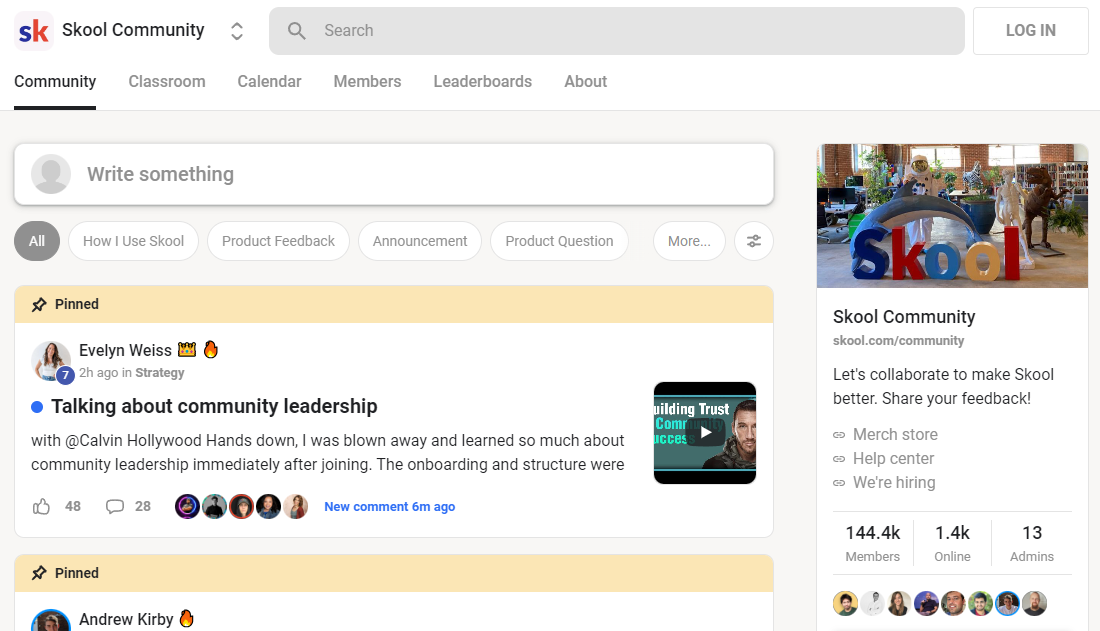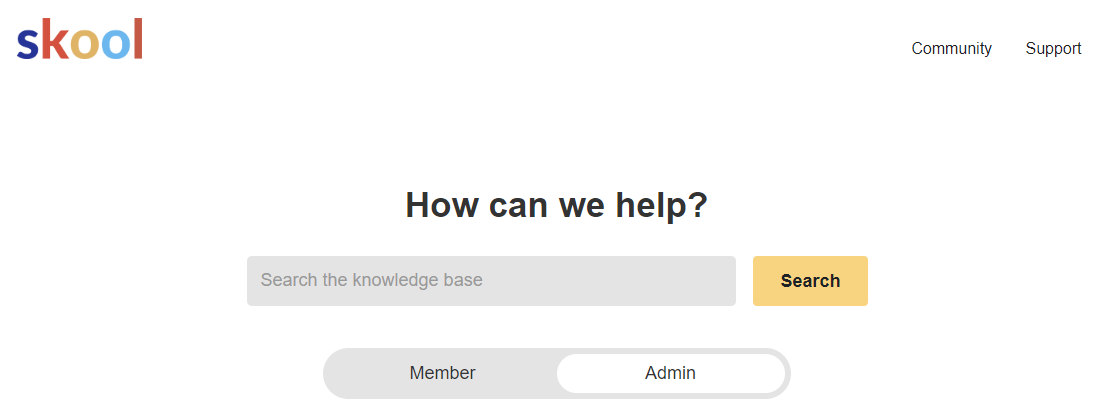Skool offers best-in-class gamification functions that increase involvement. As an example, members can gain levels based on their participation, which open training course material and various other incentives that even more motivate them.
Previously, developers needed to make use of various tools for hosting programs, developing communities and managing email marketing. This produced a disjointed experience for both creators and their target markets.
Producing Courses
Skool has a simple, user-friendly interface and focuses on neighborhood structure and training course organizing over various other features. It permits makers to create a vibrant community for their courses and training programs by attaching them with the appropriate target market. This additionally helps them keep track of the health and wellness of their content business with the help of a basic control panel.

To start, a person can sign up for a complimentary 14-day trial of Skool. After that, they can pay $99 a month for the system to organize a single community. There are nothing else prices options offered for the moment. Skool likewise refines payment and pays developers weekly, however it does charge a 2.9% purchase cost.
One of the distinct aspects of Skool is that it can be utilized to develop interactive programs. These can consist of live webinars, team projects and real-time discussions. These types of programs urge involvement and rise training course completion prices. On top of that, Skool’s gamification features help to encourage community involvement. For example, members can earn points and unlock course material when they get to specific levels in the community.
Individuals can likewise use the social prey on Skool to post updates and interact with others in the area. The feed looks like a Facebook group, but with an extra regulated way of posting. This assists to prevent the sort of spam and abuse that occurs on other social platforms.
Managing Communities
Skool is an extremely easy platform to make use of, for both members and admins. Its simplicity is just one of its main marketing points– when a person joins your neighborhood they will not be faced with a lot of alternatives or attributes that can hinder their experience and perplex them.
The platform begins as a personal team by default, however you can conveniently change this to open your community to any individual that you intend to be part of it. As soon as you’ve done this you’ll see a social feed like you would certainly on Facebook Groups or WhatsApp (yet without all the fraud stuff and swearing).
You can likewise add a classroom tab to your neighborhood that you can make use of to share instructional material with your members. This function is especially helpful for neighborhoods that are concentrated on learning or expert growth as it helps to produce an educational structure and makes it simple for members to track their progression. Additionally, the platform has gamification components that permit participants to earn factors by suching as blog posts or comments. When they reach a specific degree they can open sources, such as courses, even more driving engagement.
The other awesome thing is that Skool has a mobile app, much like Mighty Networks or Slack, so members can stay up to date with your community and connect on the go. This is a great method to urge and involve your participants and to help them obtain support from each other when they require it, as opposed to just turning to you for responses.
Skool Integrations
Skool concentrates on gamification, enabling individuals to make factors and badges for their contributions. This encourages members to engage with the community and contribute to conversations. Consequently, this helps them level up and unlock advantages like video clips and various other content. Admins can also establish courses to be unlocked at certain degrees to additional drive engagement.

The Skool interface is very clean and intuitive. Its main features include the Community tab, which looks much like a Facebook group feed. Below, individuals can publish remarks and message along with upload images, web links and video clips. Members can additionally see each others profiles and connect with them. In addition, users can produce private teams in the community to talk about particular subjects.
An additional feature of Skool is the Classroom tab, which resembles a YouTube livestream or Zoom conference. Using this, administrators can host trainings and webinars for their pupils. They can also include occasions in the schedule to stay upgraded on upcoming events and Skool Integrations.
However, some facets of Skool can use improvement. For instance, the system isn’t flexible when it comes to money making as individuals can not offer numerous rates tiers for their training courses and neighborhood memberships. Moreover, the tool does not have an e-mail advertising and marketing attribute, which may be a deal breaker for some program creators. It also does not have indigenous video hosting, meaning that individuals need to make use of outside systems like YouTube, Loom and Vimeo for their videos.
Adding Content
The process for including web content and engaging with members on Skool is easy and simple. Admins can create articles with text, GIFs, videos and surveys. They can likewise include event calendars to notify neighborhood members of upcoming team Zoom calls or live streams. Furthermore, they can make use of Skool’s e-mail broadcast feature to send a message to the entire neighborhood with a single click. This eliminates the requirement for identifying and list segmentation, which can be cumbersome.
In addition, Skool’s gamification functions can improve involvement and individual retention. It urges members to communicate with the content often by compensating them with different advantages. These include opening course web content, gaining points and earning an area on area leaderboards.
While Skool supplies a host of valuable features for producing and delivering online programs, it’s not for everyone. The system is best for trains, consultants and various other information entrepreneurs. However, the cost can be a barrier for some individuals looking to monetize their on the internet content.
Furthermore, the absence of standard tiers and a short free trial may be a deterrent for numerous. Additionally, the platform’s laser-focus on eLearning can make it much less desirable for people that want to market other electronic items. Nonetheless, despite these downsides, Skool Integrations is still a viable option for any person seeking to produce and monetize on-line programs.